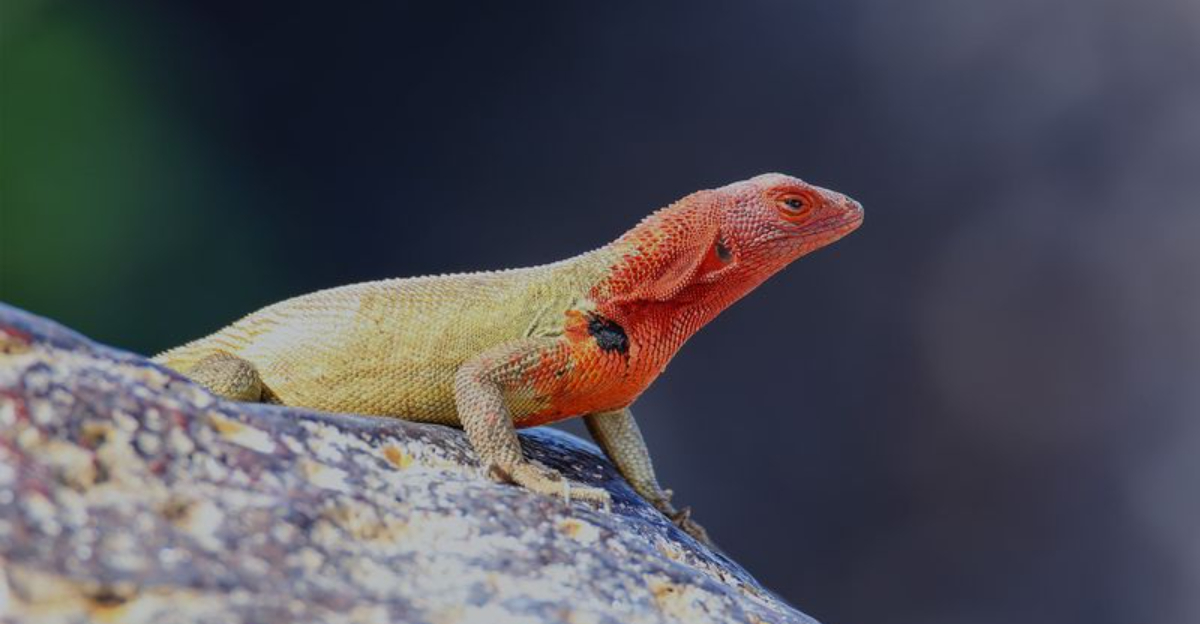Volcanic ecosystems, with their extreme temperatures and unique conditions, host a surprising array of life forms. From the fiery depths of the Earth’s crust to the inhospitable surfaces of active volcanoes, nature finds a way to thrive.
Let us explore together some incredible creatures that call these harsh environments home, showcasing the remarkable adaptability and resilience of life.
Each creature has evolved unique features and behaviors that allow them to survive and even flourish in places where life seems impossible. This collection of fascinating organisms highlights the diversity and ingenuity of life on our planet.
1. Hawaiian Volcano Snail
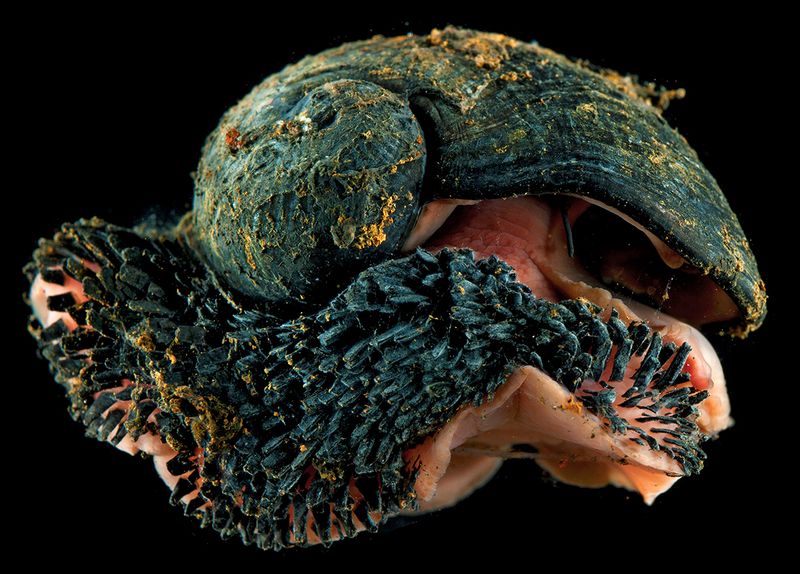
In the lush volcanic landscapes of Hawaii, a unique snail finds its home. Unlike its garden cousins, the Hawaiian Volcano Snail thrives amidst steam and heat. Its robust shell is specially adapted to withstand harsh conditions, offering a protective barrier against the abrasive volcanic terrain.
Adapted to survive where others might falter, this snail embodies resilience. It grazes on the limited vegetation available, utilizing specially developed enzymes to break down tough plant material. This dietary adaptation ensures its survival in an environment where resources are scarce.
Despite the challenging habitat, this tiny mollusk contributes to the ecosystem by aiding in the decomposition process.
It helps recycle nutrients, forming a crucial part of the nutrient cycle. The Hawaiian Volcano Snail is an excellent example of nature’s ability to adapt and thrive, reminding us of life’s tenacity and creativity even in the most unlikely places.
2. Alvinella Pompejana
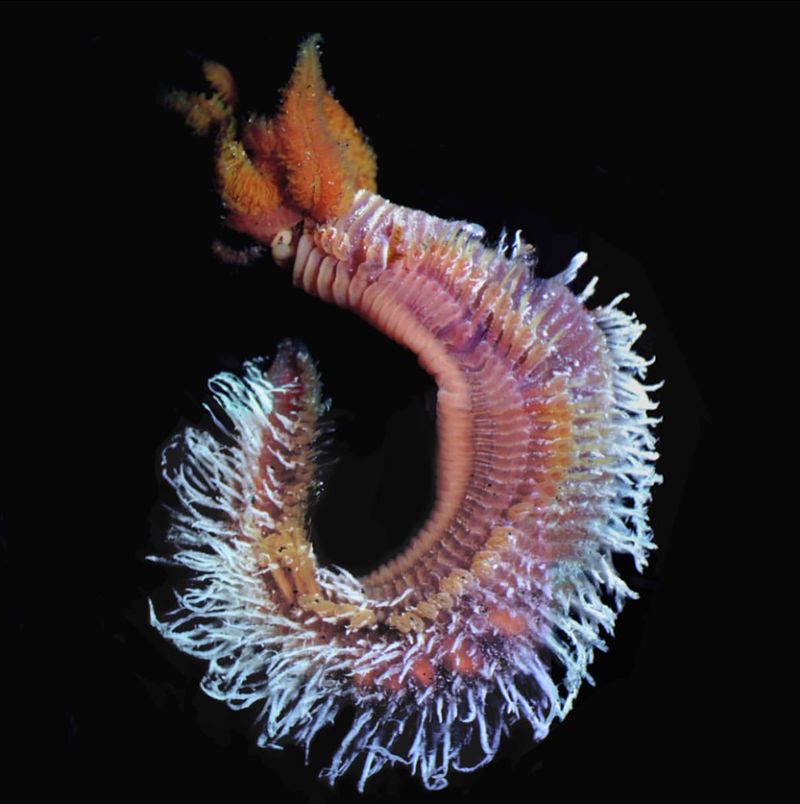
Deep beneath the ocean’s surface, the Alvinella Pompejana, or Pompeii worm, defies expectations. Clinging to hydrothermal vents, this worm withstands some of the highest temperatures known to support life. Its habitat, rich in sulfur and metals, shapes its unique adaptation strategies.
The worm’s back is covered in a unique fleece of bacteria, providing insulation against extreme temperatures. This symbiotic relationship offers mutual benefits, with bacteria thriving in the worm’s secretions and potentially aiding in detoxification.
The Alvinella Pompejana’s survival illustrates how life can persevere in extreme conditions. Its existence challenges our understanding of life’s limits, pushing the boundaries of biological adaptability.
This remarkable creature not only enriches our knowledge of biological diversity but also opens new avenues for research into life’s resilience in harsh environments.
3. Yellowstone Microbes
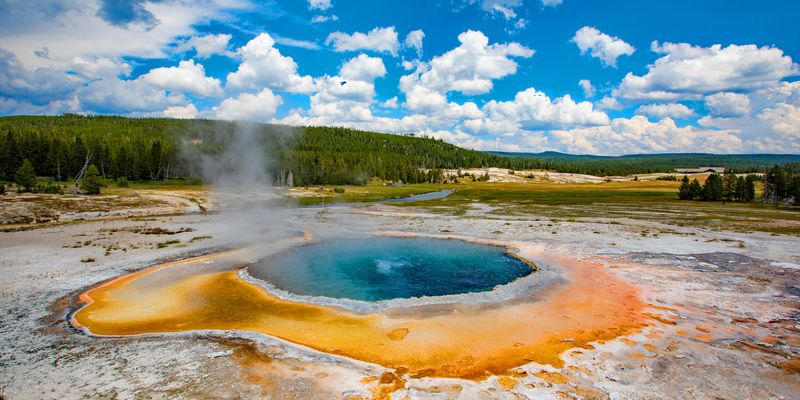
In the steaming hot springs of Yellowstone National Park, microscopic organisms flourish. These Yellowstone Microbes have adapted to survive in boiling waters, thriving in an environment rich in minerals and heat. They form colorful mats, painting the landscape with hues of green, orange, and red.
Their unique biochemistry allows them to harness energy from sulfur and other minerals, bypassing traditional photosynthesis. This chemical adaptation enables their survival in a place where sunlight is often scarce.
These microbes are crucial to their ecosystem, forming the base of a food web that supports various life forms.
Their presence underscores the complexity and interdependence of volcanic ecosystems, highlighting how life can evolve in unexpected ways. By studying these organisms, scientists gain insight into the potential for life in extreme environments, both on Earth and beyond.
4. Volcanic Crabs
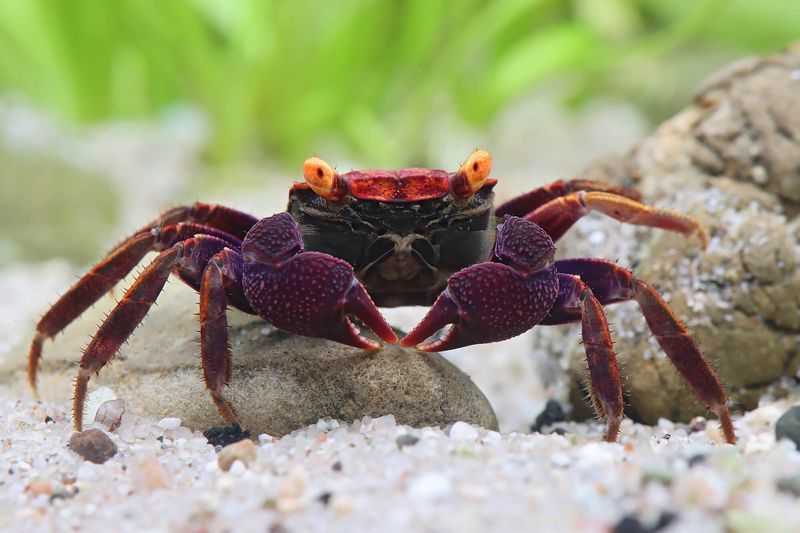
Volcanic Crabs are remarkable crustaceans found near the vents of active underwater volcanoes. Their hardy existence showcases nature’s adaptability, as they navigate rocky terrains where temperatures fluctuate dramatically.
These crabs possess thick, robust shells that protect them from the harsh volcanic environment. Their diet consists of detritus and microorganisms found around vent areas, allowing them to thrive where few other species can survive.
Living in one of Earth’s most challenging habitats, Volcanic Crabs contribute to the ecosystem by helping to break down organic matter.
Their presence illustrates the complex relationships within volcanic ecosystems, where each species plays a vital role. The ability of these crabs to survive in such a hostile environment is a testament to the resilience of life and its ability to adapt to even the most extreme conditions.
5. Sulfur-Loving Bacteria
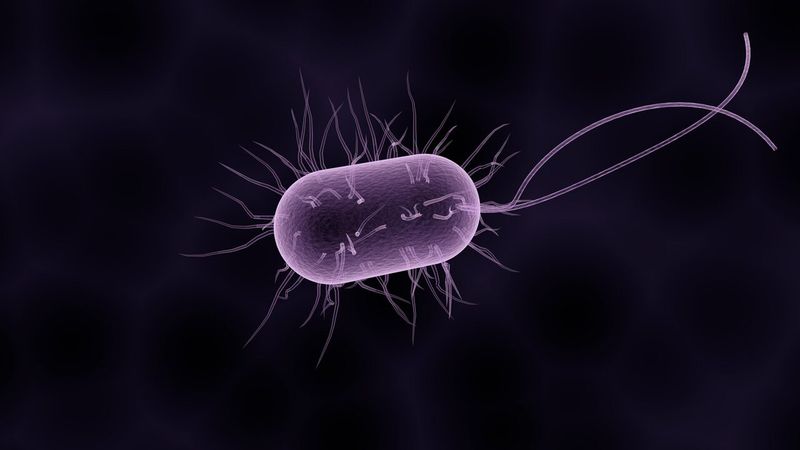
In the shadow of active volcanoes, sulfur-loving bacteria play an essential role in transforming inhospitable landscapes. These microbes thrive in sulfur-rich environments, metabolizing sulfur compounds to sustain themselves.
Their existence is a testament to life’s ability to adapt to extreme conditions. By breaking down sulfur, these bacteria contribute to nutrient cycling, supporting other life forms that rely on their metabolic byproducts.
Sulfur-loving bacteria are pioneers in their ecosystem, creating opportunities for other organisms to colonize previously barren landscapes.
Their adaptability highlights the interconnectedness of life, showing how even the smallest organisms can have far-reaching impacts on their environment. This adaptability and resilience offer exciting possibilities for understanding life’s potential on other planets with similar harsh conditions.
6. Volcanic Vent Fish
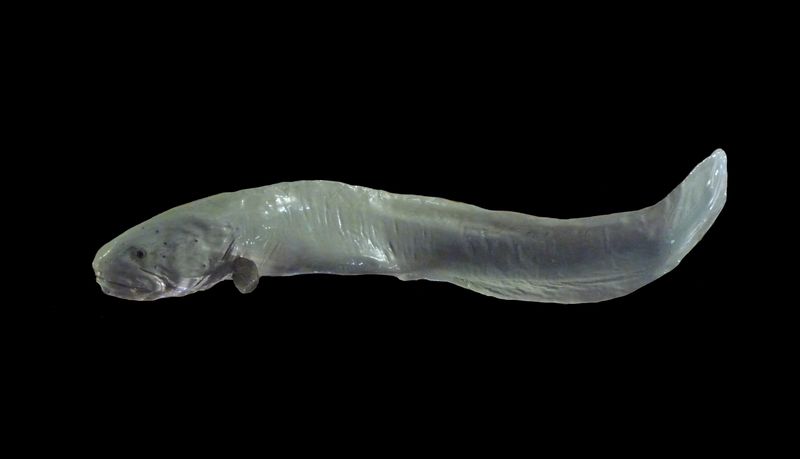
In the depths of the ocean, Volcanic Vent Fish glide effortlessly through waters teeming with heat and minerals. These remarkable fish have evolved to thrive near hydrothermal vents, where few species dare to venture.
Adaptations such as specialized gills allow them to extract oxygen efficiently in an environment where gases and minerals abound. Their streamlined bodies enable swift navigation through turbulent waters, ensuring survival in a challenging habitat.
Volcanic Vent Fish play a crucial role in their ecosystem, feeding on smaller organisms that thrive around vents.
Their presence supports the complex food web that exists in these unique underwater environments. Their ability to adapt and flourish in such extreme conditions exemplifies the incredible diversity of life and its capacity to conquer even the most daunting landscapes.
7. Thermophilic Algae
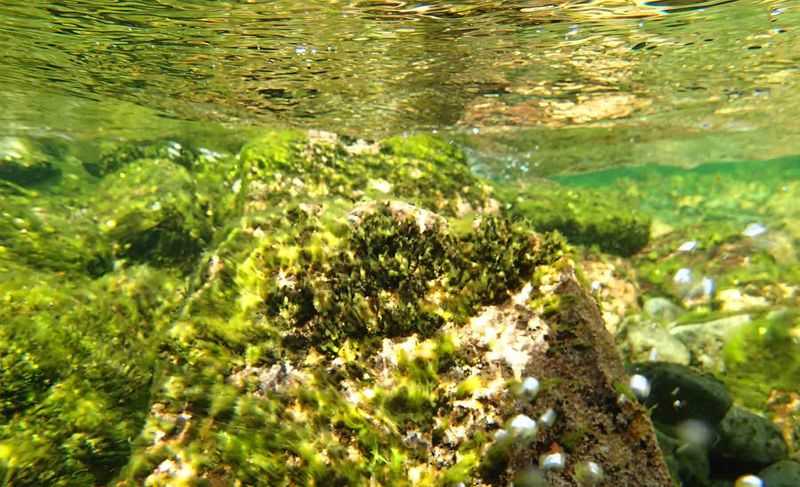
Clinging to the scorched surfaces of volcanoes, Thermophilic Algae demonstrate life’s resilience in extreme conditions. These algae thrive in high-temperature environments, utilizing heat as a catalyst for growth and reproduction.
Their ability to photosynthesize at elevated temperatures allows them to inhabit areas where few other plants can survive. This unique adaptation not only sustains their growth but also contributes to the surrounding ecosystem by providing a food source for herbivorous organisms.
As primary producers, Thermophilic Algae play an essential role in volcanic ecosystems. They form the foundation of food chains, supporting diverse life forms that depend on their presence.
Their capacity to adapt to such extreme conditions exemplifies the ingenuity of life and its relentless pursuit of survival in even the most unforgiving landscapes.
8. Volcanic Octopus
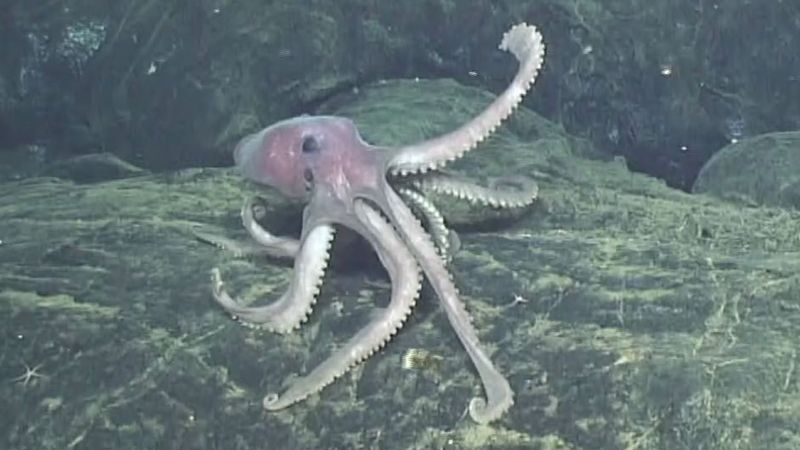
Among the underwater volcanic formations, the Volcanic Octopus displays remarkable adaptability. Its vibrant red and orange hues blend seamlessly with the fiery surroundings, offering excellent camouflage against predators.
This octopus has evolved unique physiological traits, such as heat-resistant enzymes, allowing it to thrive in warm waters near volcanic vents. Its ability to withstand temperature fluctuations makes it a formidable survivor in its challenging habitat.
The Volcanic Octopus is a skilled hunter, preying on crustaceans and small fish that inhabit these volcanic waters.
Its presence is vital to maintaining ecological balance, regulating prey populations and contributing to the health of its ecosystem. The Volcanic Octopus showcases the incredible adaptability of marine life, thriving where few dare to venture.
9. Lava Lizards
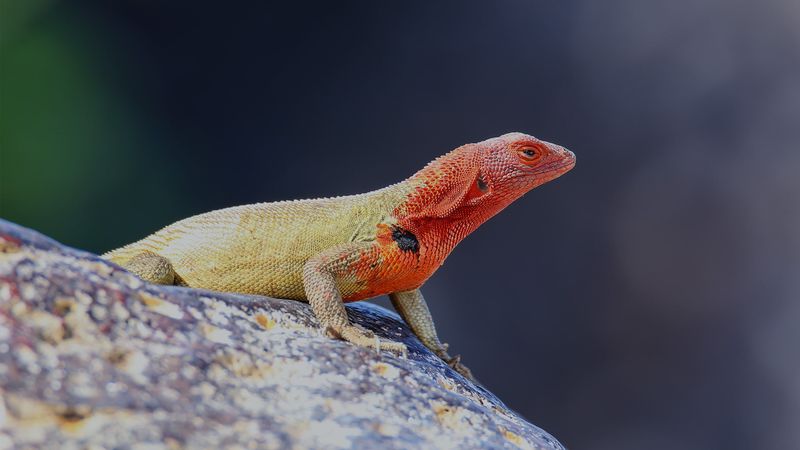
Basking on sun-drenched volcanic rocks, Lava Lizards epitomize adaptation to extreme environments. These reptiles have developed heat-resistant scales that help regulate their body temperature, ensuring survival in a habitat where temperatures can soar.
Their diet consists mainly of insects and plant matter, making them versatile feeders in an environment where food sources can be scarce. This adaptability allows Lava Lizards to thrive amid the challenging conditions of volcanic landscapes.
Lava Lizards play a vital role in controlling insect populations, contributing to the ecological balance of their habitat.
Their presence demonstrates the resilience and adaptability of life, showcasing how organisms can evolve to thrive in even the most unforgiving environments. Their colorful appearance and intriguing behavior make them a fascinating subject of study in the realm of evolutionary biology.
10. Volcanic Shrimp
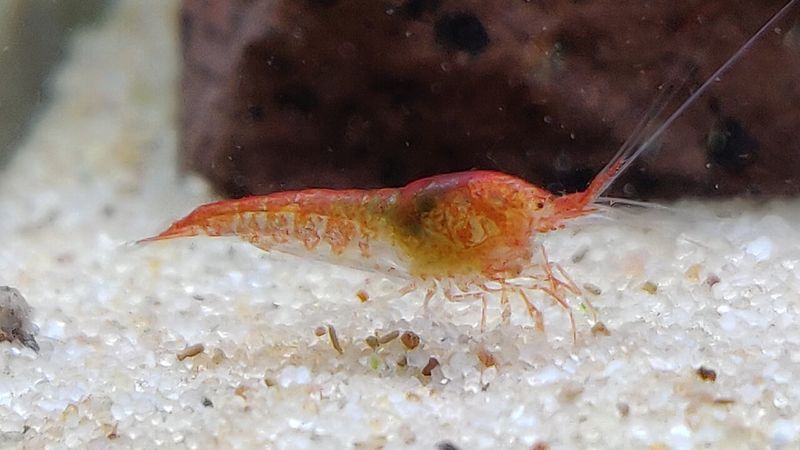
Translucent and delicate, Volcanic Shrimp thrive in the warm pools of volcanic ecosystems. These small crustaceans have adapted to survive in environments rich in minerals and heat, where few others can endure.
Their transparent exoskeletons allow them to blend into their surroundings, providing protection from potential predators. This camouflage is an essential survival strategy in the vibrant and unpredictable volcanic landscape.
Volcanic Shrimp feed on plankton and organic debris, playing a crucial role in nutrient cycling within their ecosystem.
Their ability to flourish in such challenging conditions highlights the remarkable adaptability of life, illustrating how organisms can exploit even the harshest environments for survival. Their presence enriches the biodiversity of volcanic ecosystems, showcasing nature’s ingenuity.
11. Scalding Hot Spring Frogs
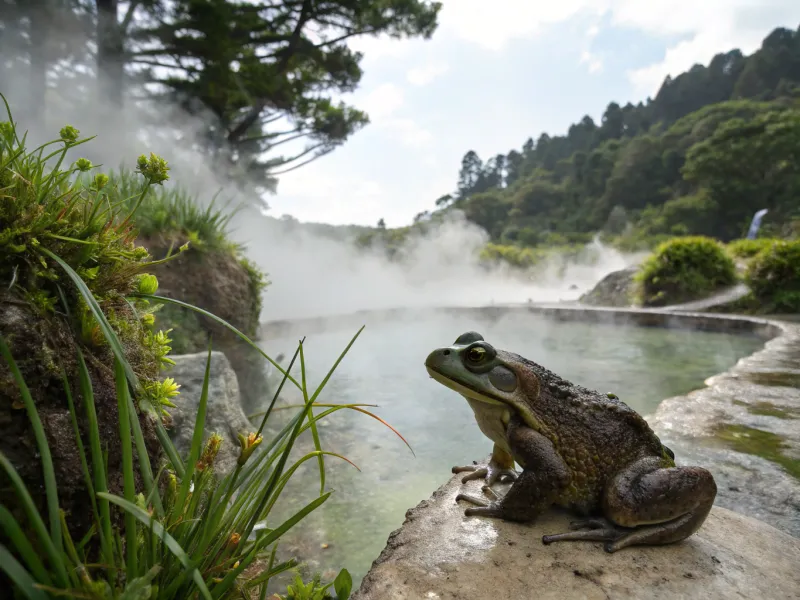
Perched on the edges of steaming hot springs, Scalding Hot Spring Frogs exhibit unique adaptations for survival. These amphibians have developed thick, insulating skin that protects them from the heat, allowing them to thrive where others cannot.
Their proximity to hot springs provides access to warm water, crucial for their reproductive success. This environment creates a safe haven from many predators, ensuring the survival of their offspring.
Scalding Hot Spring Frogs contribute to the biodiversity of volcanic ecosystems, maintaining ecological balance by controlling insect populations.
Their unique adaptations and role in the ecosystem exemplify the creativity of evolution, showcasing how life can flourish even in the most unexpected places. These frogs offer valuable insights into the study of evolution and adaptation.
12. Volcanic Beetles
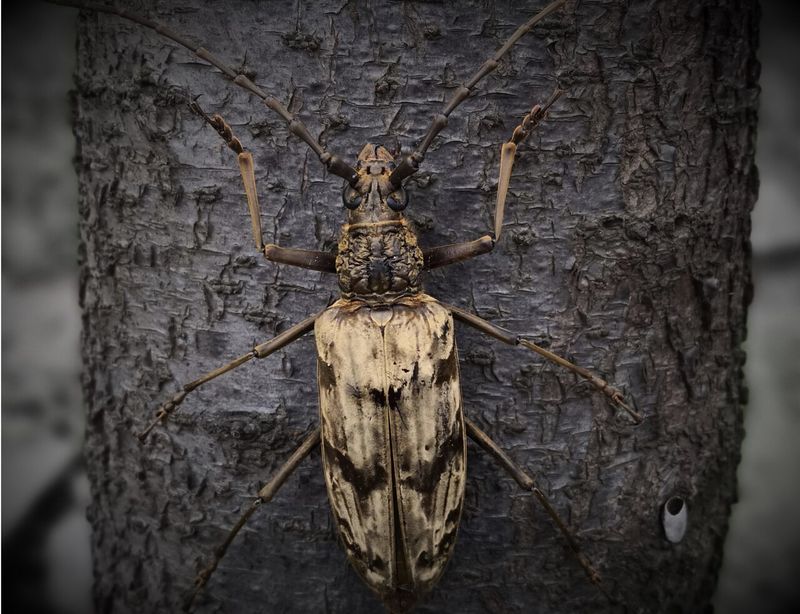
Navigating the rocky terrains of volcanic landscapes, Volcanic Beetles showcase remarkable survival skills. Their shiny, dark exoskeletons provide protection against the abrasive surfaces and fluctuating temperatures of their habitat.
These beetles have adapted to feed on detritus and organic material found in the volcanic environment, making them key players in nutrient recycling. Their ability to break down organic matter supports the ecosystem by enriching the soil with nutrients.
Volcanic Beetles serve as an integral part of the food web, providing a food source for predators that inhabit the volcanic ecosystem.
Their presence highlights the interconnectedness of life, illustrating how even small creatures can have significant impacts on their environment. These beetles demonstrate the resilience of life, adapting to thrive in challenging conditions.
13. Acidophilic Algae
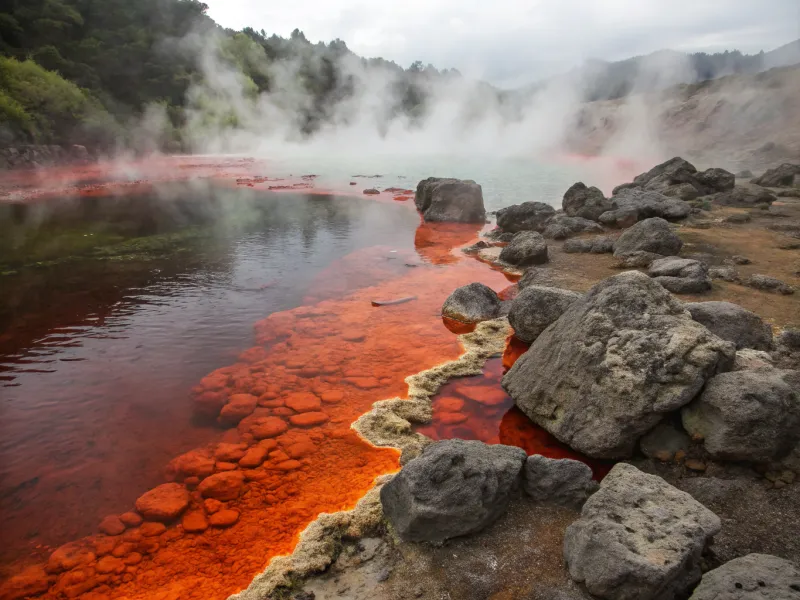
Thriving in acidic volcanic waters, Acidophilic Algae are a testament to life’s adaptability. These algae have evolved to survive in environments with high acidity, exploiting conditions that are inhospitable to most other life forms.
Their vibrant red and orange colors result from pigments that protect them from the harsh environment, aiding in photosynthesis and growth. This adaptation allows them to flourish where few plants can exist.
As primary producers, Acidophilic Algae form the foundation of the food web in these acidic waters, supporting a range of organisms that depend on their presence. Their ability to adapt to such challenging conditions exemplifies nature’s ingenuity, showcasing the diversity and resilience of life.
These algae offer valuable insights into the study of evolution and life’s potential in extreme environments.
14. Volcanic Geckos
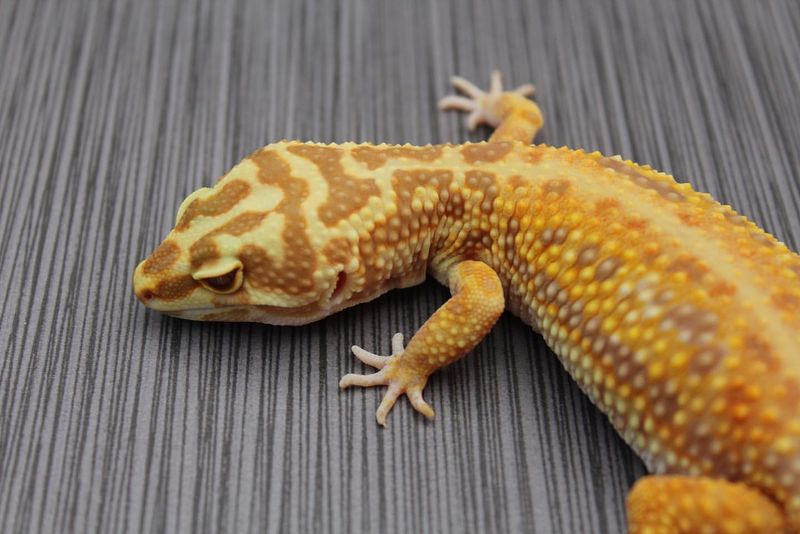
Gracefully moving across rugged volcanic rocks, Volcanic Geckos exhibit extraordinary adaptability. Their mottled skin patterns offer camouflage against the rocky background, providing protection from predators in their unique habitat.
These geckos have specialized toe pads that allow them to grip and navigate the rough surfaces of volcanic landscapes. Their diet includes insects and small invertebrates, making them versatile feeders in an environment where food can be scarce.
Volcanic Geckos contribute to the ecological balance by controlling insect populations, helping maintain the health of their ecosystem. Their presence underscores the adaptability and resilience of life, illustrating how organisms can evolve to thrive in even the most challenging environments.
These geckos are a testament to the creativity of evolution, showcasing nature’s ability to flourish in unlikely places.
15. Volcanic Mussels
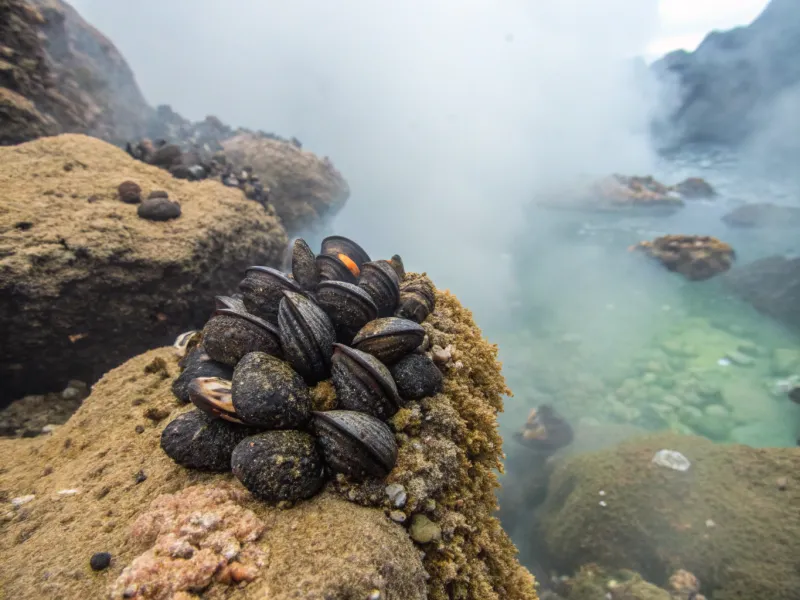
Clustered around underwater volcanic vents, Volcanic Mussels exemplify resilience in extreme conditions. Their dark shells protect them from the fluctuating temperatures and harsh chemical environment of their habitat.
These mussels have developed the ability to filter nutrients from the mineral-rich waters, sustaining themselves in an environment where food sources are limited. Their presence supports a diverse range of marine life, contributing to the ecological complexity of volcanic ecosystems.
Volcanic Mussels play a crucial role in nutrient cycling, helping maintain the health of their environment. Their ability to adapt and thrive in such challenging conditions highlights the remarkable resilience of life, illustrating how organisms can exploit even the harshest environments for survival.
These mussels showcase the diversity and adaptability of marine life, offering valuable insights into the study of evolution and adaptation.

